Whereas my activities at WFMR were often interesting, my connections with jazz at WYMS were a constant joy.
The station had jazz programs all day and overnight, with folk music and other ethnic music features some evenings and on weekends. It also regularly broadcast Milwaukee Public School Board meetings (WYMS—Your Milwaukee Schools), and, of course, was in the administration building on W. Vliet Street.
I took over the mid-day program, 10 a.m. to 2 p.m. in 1997. It was previously hosted by Linda Scott who had decided that she wanted to spend her time doing other things. Linda, by the way, a kind and gentle person, was the first transsexual I’d ever met, something she and I also briefly discussed once.
The great thing about having more regular air time was the expanded chance to select and program the music, which every d.j. did. Bill Bruckner functioned as program director but chose to have marginal say in what recordings any of us selected. We had two turntables and two CD players, which meant that I could play my many LPs collected from my days at WNCN, WBAI, Radio Genova Sound, RAI, and KHFM and those CDs I’d collected as a writer for Footlights Magazine (see below), as well as to explore the station’s extraordinary CD library.
By mid-1998, Bill, who’d hosted the morning drive show from 6 a.m. to 10 a.m., decided that he’d had enough of getting up way early in the morning and asked me if I’d like to switch shifts with him. I was delighted.
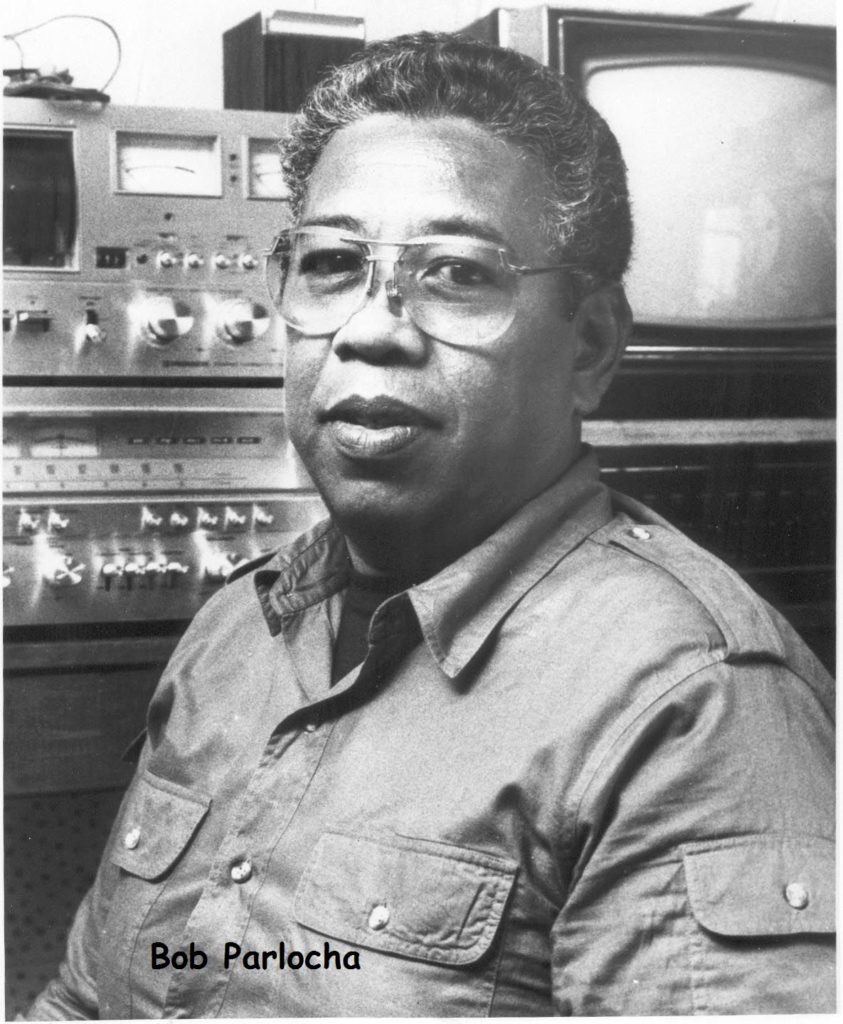
Coming in around 5:30 in the morning, by the way, I always heard the overnight syndicated feed Jazz with Bob Parlocha. I found his programming entirely wrong for that time of day. He featured hard bop. Jarring and noisy; moreover, he followed a programming pattern which seems to have remained common and unoriginal to this day, as if it were some required format. I’ve heard jazz d.j.s do it everywhere. Three unrelated tracks back to back, not of the same musicians or from the same disc, with no talk in between. Info about the first selection at the start and, at the end of the three, talk about what preceded. There’s no musical justification. Coming to Omaha in 2013, I was offered a show on KIOS. Asking if required to adhere to that so-standard pattern, I was told that I needn’t, even though the other WYMS hosts had always been doing it. They still do. I quit after 20 months, but that had nothing to do with the them. (More about KIOS much later.)
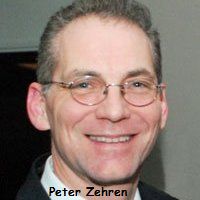
Anyway, re: WYMS, we had regular top of the hour newscasts at 7, 8, and 9 a.m., read from wire copy by Peter Zehren. He read well. Amusingly, he loved trying to pronounce the regional ways of naming states and towns, e.g., “Missourah” for Missouri, “Norlens” for New Orleans.
I don’t remember Peter’s title but he was part of Station Manager Roger Dobrick’s staff. Peter had a major role in on-air fund raising drives. He was in charge hyper-energetically and easily angered. But the drives were always successful. WYMS fund drives resembled many others of non-commercial radio stations; we offered “gifts” in return for specific “pledge” amounts. In 1999, Peter and I came up with an interesting idea. We’d offer a CD containing four of my jazz interviews, all of them from my earlier days, with Billie Holiday (WFLN), Louis Armstrong, Duke Ellington (WOND), and Cannonball Adderley (WNCN).
Certainly WYMS had a serious following, including listener Keith Mardak, the CEO of Milwaukee’s Hal Leonard publishing company, evidently the world’s largest publisher of sheet music. In 1997, Mardak decided to create and sponsor a series of live jazz performances at the historic Pabst Theatre, where there was already a chamber music series. Mardak created an advisory board to work with his company to organize and plan the jazz series. I became a board member; so did Roger Dobrick, I think. Who else, I’m not sure, but most likely someone from Pabst management, and perhaps music critic Dave Tianen of the Milwaukee Journal Sentinel. Why me? Probably because I volunteered, but possibly also because I was a well-known music broadcaster, on WYMS and WFMR, and a writer about jazz for the monthly Footlights Magazine (more about that later.)
The board was thrilled to have a hand in booking some of most famous musicians, and we quickly engaged Dave Brubeck for one concert and Gerry Mulligan for another. (Re: Mulligan, see above for the New York part of this memoir, “Jazz Plus a Few Other Cats.”) I was the m.c. for both of those concerts. No surprise. I had been hosting pre- and post-concert events for the Milwaukee Symphony (more about that later, too).
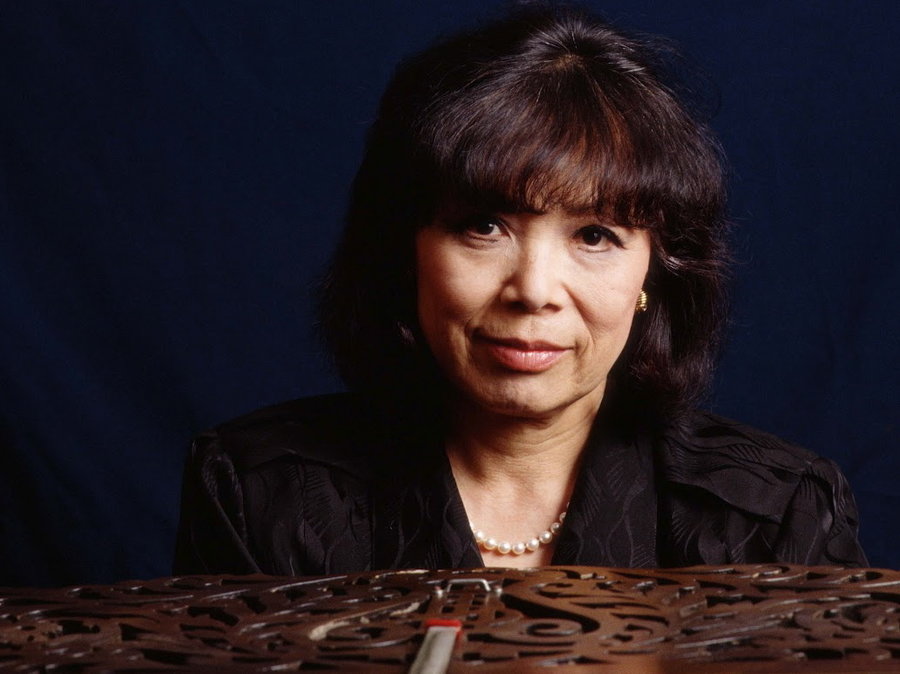
But the artists I most wanted to engage were the members of Toshiko Akiyoshi/Tabackin Big Band. In 1998, I convinced the board to book them. I had been a Toshiko fan since the late 1970s, meaning I’d broadcast her LPs on WBAI, Radio Genova Sound, RAI, KHFM, and KUNM.
The Board agreed to have the band perform in the series. I was really happy about that. Once it was set, I’d hoped to broadcast one of the band’s more recent CDs, but there weren’t any like that in the WYMS library. After contacting Toshiko’s agent and then Toshiko herself, she agreed to lend us Monopoly Game from 1998, then only on a Japanese label. We had to agree to return it. Which we did.
I interviewed her on the phone where she lamented that so much of what the band had recently recorded for BMI was only being released in Japan. Evidently the company didn’t think big band recordings sold well enough to try to market them widely. Toshiko knew that the band wouldn’t get larger audiences without new CDs able to stimulate interest. And we at WYMS, a jazz station, consistent with BMI’s reluctance, had no new promotional discs.
That band did sometimes appear at jazz festivals. And there was an ongoing 1996-started series of Monday night performances at Birdland. But once a week in New York could hardly be considered a major source of income. That, by the way, was the best night for band members, more regularly engaged as studio musicians.
We talked about why Toshiko wanted to keep going, considering the high cost of maintaining the group: “People like to hear what we do. So do the musicians; without that enthusiasm we wouldn’t be able to do this.”
She and second husband Lew Tabackin started the 16-member big band in 1973, engaging L.A. studio musicians. It was not a profit-making enterprise, so much so that Toshiko copied the arrangements herself. It was always her own music that was featured, her choice. “I wanted to find an outlet for my writing and try to accumulate a real library to leave behind when I’m gone.”
Toshiko felt that a meaningful big band had to have a specific identity rather than be a group that relied on playing standard repertory. She cited Ellington among others. Duke had said to me back in 1957, something he certainly had said before, “The band is my instrument.” Duke was able to keep it going almost full-time by taking funds from his substantial royalty earnings, so many of his songs had become standards. Toshiko didn’t have that option, but she regularly took piano solo and trio gigs and that kept some money coming in.
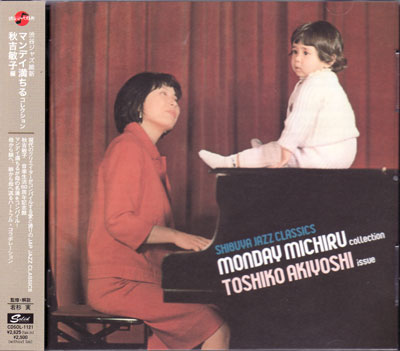
“I enjoy playing the piano,” she said, “and that’s part of what I like about being in this band. I didn’t start this because I wanted to be a leader.” She also had to take time out to be a mother. In 1963, she and then-husband saxophonist Charlie Mariano had a daughter. At that time Toshiko and Mariano had ongoing small groups in the U.S. but she “felt uncomfortable and insecure” away from her native culture. She went back to Japan and stayed with her mother while giving birth to a girl now known as Monday Michiru, actress, singer, songwriter.
As for Toshiko’s influences, musically and otherwise: “Everything you do, everything you see is part of your heart. My music is part of my experience, part of myself.”
When that tiny Asian woman in her late ’60s stood up on the Pabst stage in front of that massive amount of instruments and all those men, I started to cry. I still cherish that moment. And her.
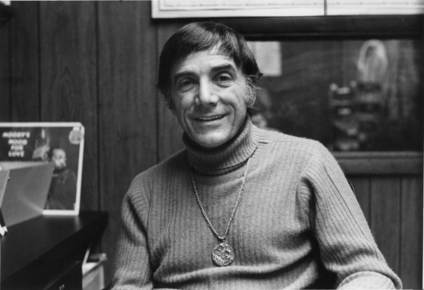
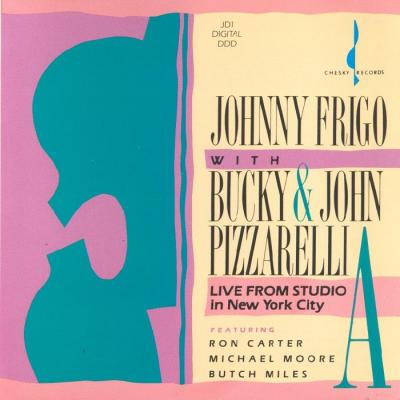
In addition to being an m.c. for the Brubeck and Mulligan concerts in the Jazz at the Pabst series, I did so for a 1996 event featuring drummer Louie Bellson. He was coming to lead one of his big band clinics—something he’d been doing nationally for a long time. It was at a local college that had jazz studies as part of its music program. Possibly Alverno College; I’m not sure now.
At the start Louie had played in many big bands, including those of Tommy Dorsey, Benny Goodman, and Woody Herman. Louie gained much fame performing with Duke Ellington in the 1940s. How did he fit in with such different styles? “A drummer has to go where the music goes. Your major role is to keep time.”
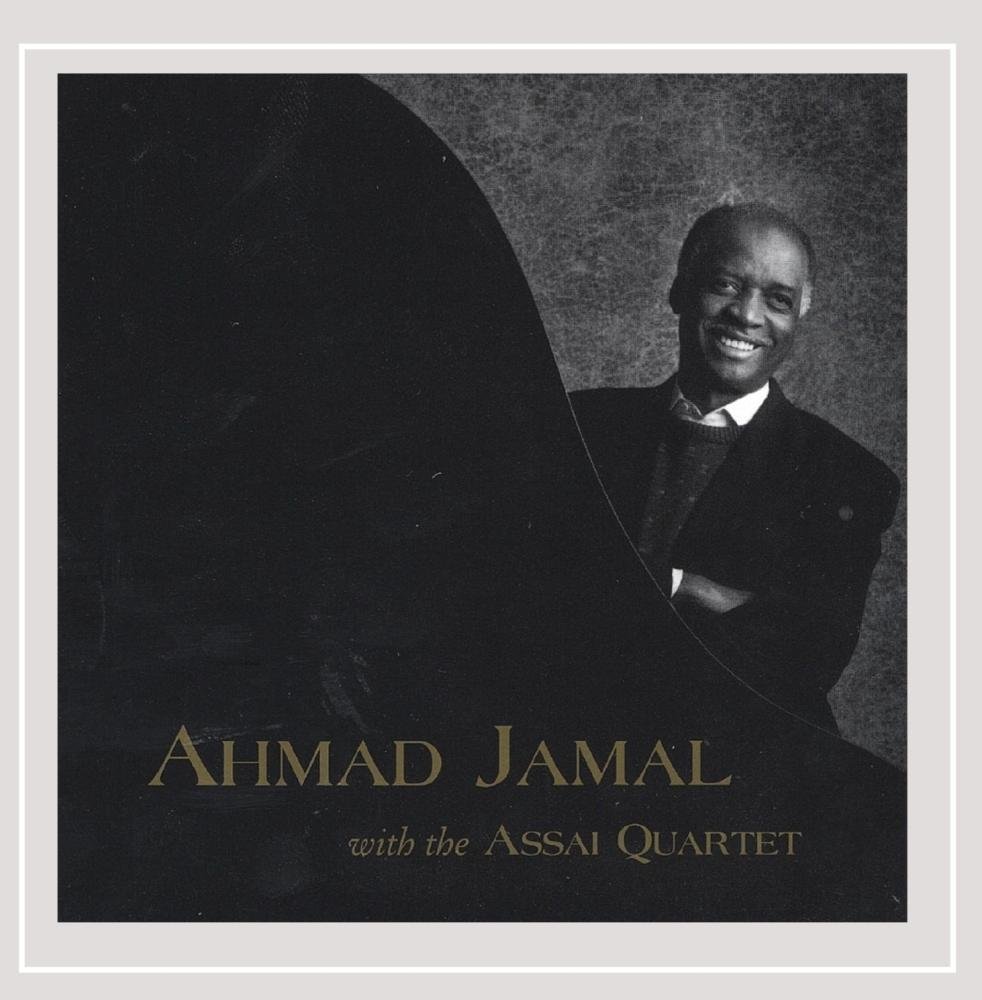
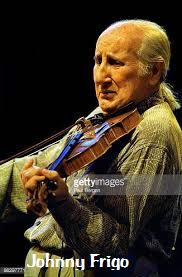
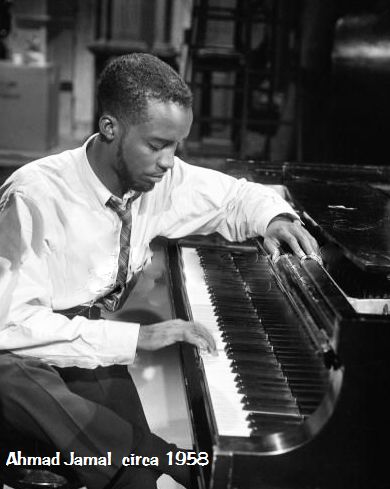
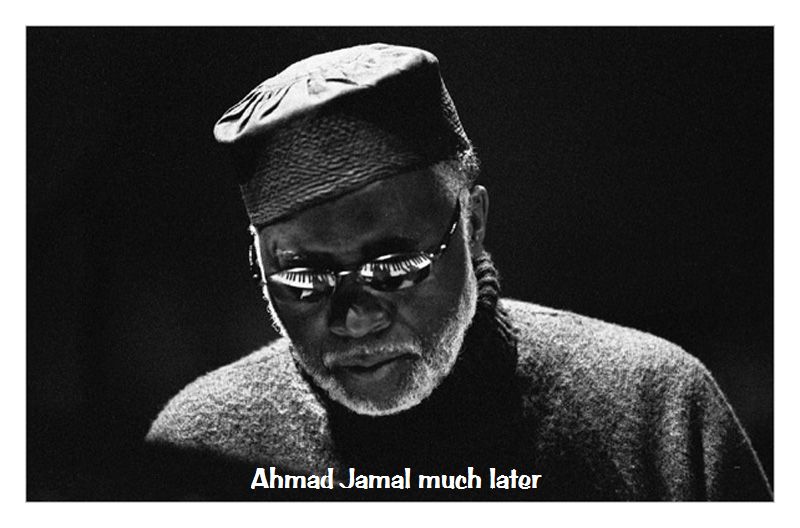
Watching Louie play, I always admired his stage presence. He was never showy. I compared that to Gene Krupa who always seemed to grab the spotlight. “Sure, he was a great showman, one of the best. He put drums in the spotlight, but he always had to be the pulse of that great Goodman band rhythm section. And he did that. He knew that you’ve got to be an accompanist first and foremost. Great players know how. And, I’ll tell you, there are a lot of new great players today who have that ability and adaptability, coming out of rock groups but able to fit in perfectly everywhere. Steve Gadd, Peter Erskine, for example.”
In a phone interview, we discussed why he continued to have such clinics, even, as then, in his early ’70s. He explained that he wanted to keep jazz bands and drumming alive by sharing what he knew and had learned, crediting Jo Jones for being a major mentor. “I couldn’t have done all that by myself if it weren’t for Jo; that’s the absolute truth. Without him, I wouldn’t be playing what I play today.” I didn’t think to ask how the connection came about. But clearly they were good friends and, in Louie’s early days, if both drummers were in the same town at the same time, Jo always wanted to give him pointers.
Reflections on his career? “The Lord has blessed me by allowing me to do what I really most like to do. It’s always also been a lot of fun.”
During my 10 years in Milwaukee I interviewed a lot of jazz musicians to promote their forthcoming appearances in town: Monty Alexander, Paquito D‘Rivera, Barry Harris, Ahmad Jamal, among them.
The one I cherished the most, after Toshiko, was John Frigo, whose career as a jazz violinist took off at age 72 in 1988. Prior to that he’d been a very busy Chicago bassist.
I first admired his violin playing when I was at WFLN hearing a 1955 Brunswick LP with pianist Dick Marx (Too Much Piano). Playing bass on most numbers, Frigo took two eloquent violin solos on “Nina Never Knew” and “Polka Dots and Moonbeams.”
Then, at KHFM, there was a second encounter, Frigo appearing for a couple of tracks with younger violinist Randy Sabien on a 1983 Flying Fish LP In a Fog. I had no idea back then that I’d later live in Milwaukee and encounter Randy whose home was in Wisconsin. Frigo and I met there in February 1997 when he was 80.
Frigo got his first major jazz attention on records as a “special guest” in a 1987 Santa Monica gig with Monty Alexander, Ray Brown, and Herb Ellis, Triple Treat II from Concord Records. What a delightful discovery that was for me, hearing it when hosting jazz shows on KUNM.
“I’d performed with Herb, mostly on bass, when we were members of the Jimmy Dorsey Orchestra in the mid-’40s,” Frigo told me. “We also linked up with pianist Lou Carter around then as a group called “The Soft Winds.”
“Back in ’87, I was playing bass in a small cocktail lounge group at Chicago’s Conrad Hilton Hotel, across the street, as it turns out, from the Jazz Showcase. Hearing that Herb was there, I figured I’d go over and say hello. I hadn’t been playing jazz violin much at the time, but Herb knew that I could, and the three of them asked me if I’d like to join in and play a couple of tunes while they were booked at the club. I went home, got my violin and came back.”
Did that get any attention?
“Leonard Feather, who knew me as a bassist, heard about my sitting in and interviewed me for the paper and then followed that up with a great review. A few months later, Monty asked me to join them in Santa Monica for what turned out to be two recordings.”
Frigo was quickly becoming known. So much so that newly emerging Chesky Records’ first-ever recording in November 1988 featured Frigo, called there and mostly thereafter “Johnny.”
“Around then, I got a call from The Tonight Show inviting me to come on as a guest. Johnny Carson probably thought I’d be interesting, suddenly getting known, at age 72, as an up-and- coming jazz musician. During the interview, Johnny asked me why I was just getting started to be serious about jazz on the violin so late in life. I said I’d waited that long so there wouldn’t be time to become a has-been.”
“But you’d actually been playing violin ever since that Dick Marx session in the ’50s, right?” I asked.
“Really long before that. Starting back in high school before I moved over to the bass. Even though for more than 25 years I’ve made quite a good living playing bass in Chicago studio sessions, I never gave up the violin. I’d join in at barn dance kinds of things to keep my fingers in shape. And, even if I wasn’t playing anywhere, I’d open the case every three or four weeks to see if the strings were OK while gathering dust.”
“Barn dances?” I asked, surprised.
“Sure. There was the National Barn Dance radio show in Chicago and every so often I’d drop by and sit in, just to keep fresh by playing country stuff; I was always looking for ways to get my chops back. Then I took a morning gig at the Regency O’Hare Hyatt for several years as a strolling musician at breakfast time with an accordionist. That’s actually when I really got them back.”
“Still it took a long time for you to get a name for yourself as a jazz musician,” I said. “Do you think that’s an example of good luck?”
“I always say that luck happens when you’re prepared for it. And, you know, there are very few fiddle players with track records after so many years off.” He also laughed at the title for his next Chesky session in 1994, Debut of a Legend, saying, “That’s such an oxymoron. And how could it be a debut when they’d already issued the other in 1989? But I had no control over he title.”
I pointed out that Joe Venuti and Stephane Grappelli were going at it when they were no longer young, to see if he felt any kinship. Grappelli was born eight years before Frigo and was still flourishing at the time with many recordings in the 1990s and Grappelli in his ’80s. And Venuti, born probably 12 or 13 years before Frigo (Venuti kept changing stories about where and when he was born), also had a lot of great gigs in his ’70s. Frigo felt that they’d been playing so long that their styles were set, whereas he was coming up with something fresher, being a bass player. “My age helped me. I found my own style and conceptions.” Not to put down Grappelli. “He was actually a hero for me when I was young.”
If you listen to the three of them back to back you’ll discover that Frigo had a different, wonderfully rich, lyrical sound with conceptions resembling those of other jazz musicians, as if commenting on his own phrases.
“I’m a very emotional guy. That’s why I love playing ballads. I like having a chance to be introspective, a sort of quiet space where I can find unusual sounds that few people do on violin. You have to break the rules.”
“I remember one time when I was playing in a club and a sweet little old lady in the audience asked me to play ‘Lara’s Theme’ from Doctor Zhivago. I knew how she wanted to hear it. I played it straight, no jazzing it up. I had empathy.”
“Actually, I don’t consider myself a jazz violinist. I like to play each song for what it’s worth. For example, I love playing country music, classical. And I love 30-second commercials, including the many where I played in Chicago studios. There’s so much going on, condensed so well. Sometimes they give me a lump in my throat, that crystallization of talent.”
The future, especially given his age? “I hope to see I’m alive for the next 10 years on this great upward surge and, you know, continue to get better with my own special style. And if someone says to me, ‘When you play that, you’ve made me cry,’ that’ll be my reward.”
He did live another 10 years, sometimes continuing to write poetry and to paint. We lost him in 2007 at age 90. By then there were two more sessions under his own name. More at: www.washingtonpost.com/wp-dyn/content/article/2007/07/05/AR2007.
No surprise that Frigo balked at being called a jazz violinist, the use of the word “jazz” often bothers such musicians. Even trying to pin down what is and isn’t, the music itself eludes resolution.
Ahmad Jamal doesn’t like the word, he told me, when I interviewed him prior to his appearing in Jazz at The Pabst, probably in 1998, when he was in his late ’60s. He preferred to call such sounds “American Classical Music,” saying that “jazz” is a very unsophisticated over-used term. “We’re not one-dimensional players, us so-called jazz musicians.” As for his own background in other kinds of music, he pointed out that he’d been playing pieces by Liszt when he was 10. And that he’d just created a recording of his own music with the Assai Quartet that he cited as an example of not fitting into the confines of labels.
His biggest ever hit, “Poinciana,” recorded in 1958, part of Live at the Pershing: But Not For Me (Argo Records) stayed on best-selling record charts for 108 weeks. Jamal pointed out that he’d never stopped performing it, 40 years later. “But I’m a baby compared to Mozart.”
Did he keep on playing that tune because it was a hit and people clamored for it? “No. You play those things that appeal to you the most and, if it appeals to the public, you’ve got a winner.”
We discussed his style. I liked best his earliest sound, back on the Argo Records recordings around 1960. And found his more recent playing not nearly as distinctive. Not that I said so to him. That ca. 1960 style, I find, matches up with what All Music Guide’s Scott Yanow calls a “use of space.” Richard Wang in the New Grove Dictionary of Jazz refers to it as “lean” with “simple embellishments.” And Wikipedia quotes “minimalist” as written by eMusic’s John Morthland. Apple Music Preview’s Matt Collar says that what Jamal “chose not to play marked him as an innovator…an adept use of tension and release…(with) nuanced shadings.” And calls attention to something later as “expansive” and “funk-infused.”
“I’m known for my discipline,” Jamal responded. “They call it what they want. The style has developed over the years a great deal, as it should. It’s a change in my approach.”
Writers often call attention to Miles Davis saying that he was influenced by Jamal’s early style, specifically a rhythmic sense, as quoted in Wikipedia and Gerald Early’s Miles Davis and American Culture, “his lightness of touch, his understatement.” According to that same source, Jamal characterized what he thought Davis admired was “my discipline as opposed to my space.”
Clearly Jamal was, let’s say, protective of his image. And when I mentioned that term “space,” referring to critic Ralph Gleason using it, Jamal talked about his dislike of music critics. Not that that attitude is rare. Many musicians don’t like being pigeon-holed in print and take umbrage at mistaken information passed off as fact.
Jamal specifically mentioned Leonard Feather and said he’d filed suit against Feather for referring to “an illegal name.” Wikipedia points out that the name appeared in a 1986 article by Feather in the Pittsburgh Courier (“Pittsburgh Jazz Festival Swings into Town.”) In fact, you’ll find Jamal’s birth name in Wang’s piece as Fritz Jones and at Wikipedia as Frederick Russell Jones. Moreover, some years after this interview, in one with me, guitarist Jimmy Ponder, referred to Jamal as “Fritzy Jones.” Both musicians hailed from Pittsburgh’s North Side and knew each other, Ponder being about 12 years younger.
Feather, by the way, evidently regularly got birth dates wrong. Jamal said that Feather was 10 years off, giving the birth year as 1921. Jamal was born, actually, in 1930. I’d often repeated Feather’s info to other musicians when talking to them and it was clear that Feather was consistently inaccurate. Usually they were amused.
My conversation with Jamal was always congenial, even though I was no longer a fan.